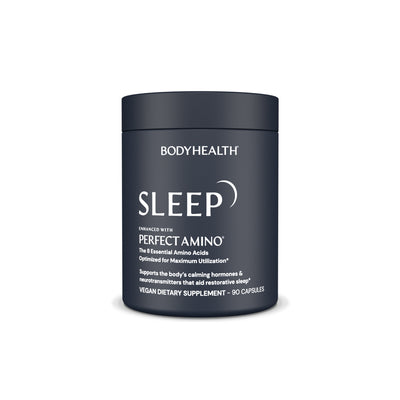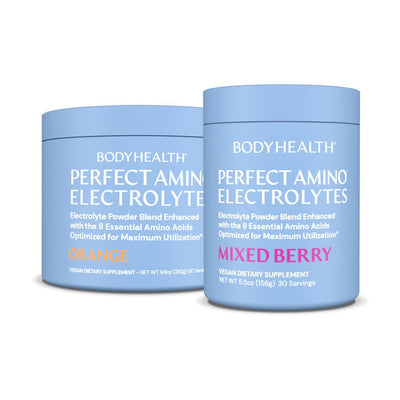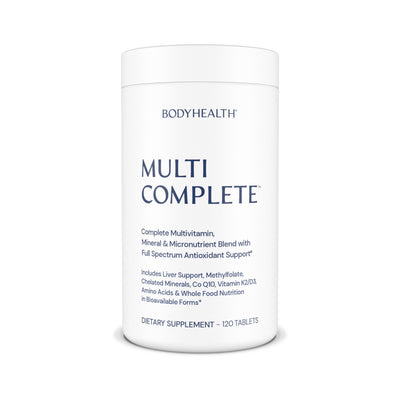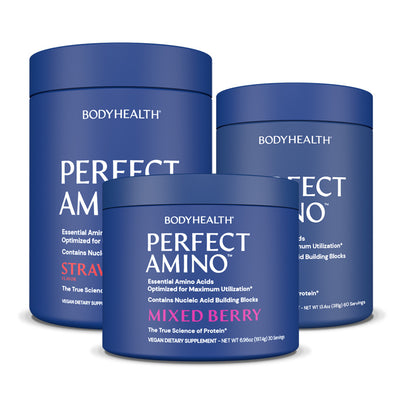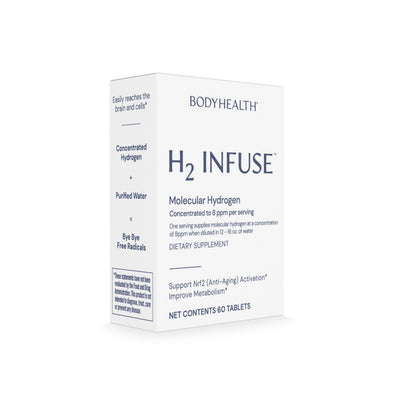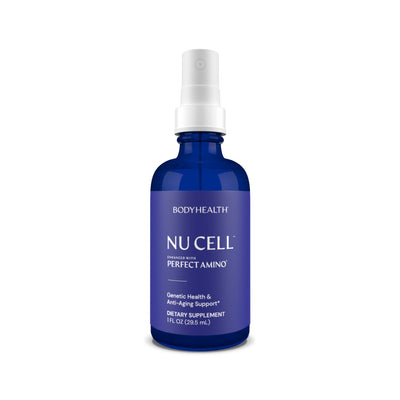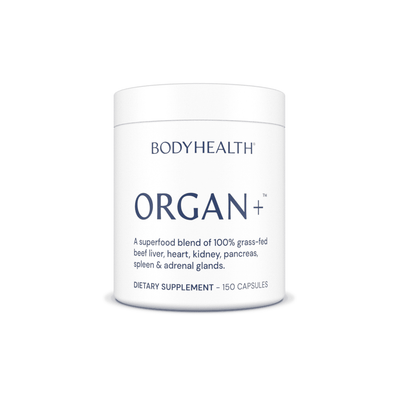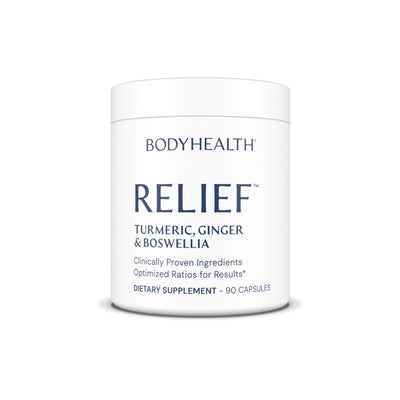Raising VO2 Max: Endurance, Performance & Recovery
by Dr David Minkoff April 07, 2024 7 min read

We’re entering Week Four of the Lean Body/Lean Bulk 30-Day Challenge.
We should be adjusting our macros now only as needed, and increasing weights weekly.
If we’re hungry, we increase macros by multiplying our current grams of each by 1.05, or lowering them by multiplying by .95.
But as our hormones normalize, and with cravings gone, we should begin to have an idea of when we need to eat more and when we don’t.
We should start to know when we need to eat more and when we don't naturally.
If we’re hungry, this is our body needing more. If we’re not hungry, this is us needing less. Possibly in general or possibly just for a day.
As long as we keep to the macro ranges when increasing or decreasing, we’re fine.
We should also be seeing less body fat if we had some to lose, and more muscle or more toning depending on what our goal is.
But now I want to add in something that will improve our recovery ability, our performance, our overall energy levels and our metabolism.
This is something that directly affects our overall health and which will allow us to keep improving over time.
It’s called VO2 Max. V is for Volume, O2 is for Oxygen, and Max is for Maximum.
VO2 max is literally the maximum amount, or volume, of oxygen that your cells can utilize during intense exercise, before you burn out.
And it directly relates to our mitochondria, the tiny engines in our cells that produce the energy our body operates off of.
Raising this allows us to raise overall performance, energy, endurance, recovery ability and overall health.
And it allows us to push much more over time, and achieve more.
So let’s dive in.
RAISING VO2 MAX: AEROBIC EXERCISE & MITOCHONDRIA
As we’re talking about oxygen, we need to talk about Aerobic exercise.
The word “Aerobic” means having to do with oxygen.
And, regarding exercise specifically, Aerobic means something that improves, or intends to improve, the ability of the body to absorb and transport oxygen to the cells.
So, if your arteries were narrowed, then the blood cells carrying oxygen, which are already slightly wider than many of your tiny arteries, would have a harder time getting through. So your heart would have to raise blood pressure to push them through.
If we got some of the fats narrowing your arteries out of there, you would have faster, easier blood flow so your cells could get oxygen faster.
That’s “improving the ability of the body to absorb and transport oxygen to the cells.”
Or, say you take up running, swimming or cycling, as well as a high fat, high protein diet, and your heart gets stronger, and your blood vessels and cells become more able to transport and take in oxygen, we would call this “aerobic” exercise because it’s improving your ability to get oxygen into your cells.
This also connects with our mitochondria, the tiny organelles inside our cells which are what require that oxygen. They take in oxygen and nutrients and make something called ATP (Adenosine Triphosphate), which is the energy our cells use to operate, which powers our body.
If you’ve ever felt out of breath, then you already know how mitochondria work.
It’s not you out of breath, it’s the mitochondria in your cells. They aren’t getting as much oxygen as they need to keep making energy to fuel your current exercise.
Increasing protein and fats, as well as increasing aerobic exercise, can help to increase the number of mitochondria we have.
And the more mitochondria we have per cell, the more oxygen that can be taken in at one time, the more energy they can create, and the more intense you can go in your exercise.
But this point where you get out of breath and can’t continue… that’s also your VO2 Max: the maximum volume of oxygen you can get to the mitochondria of your cells before the intensity of the exercise is too much and they can’t get in oxygen fast enough and you’re… out of breath and can’t go on.
So let’s see how to improve this.
HOW TO RAISE VO2 MAX
So your VO2 Max is determined by your body's ability to deliver oxygen to the working muscles, and the muscles' capacity to utilize that oxygen for energy production.
This ties in your blood vessels, heart, muscle tissue, nervous system, and obviously your mitochondria.
But this VO2 Max isn’t just when you’re out for a light jog. You may be able to go for an hour at a light jog (or maybe not). Your VO2 Max is seen when you increase intensity to a point where your cells just can’t get the amount of oxygen they need to keep you going.
That’s when you’re out of breath and need a rest.
So obviously improving VO2 max would increase how intense your exercise can be, while also increasing your endurance.
Also, as an oxygen rich internal environment can dramatically increase overall health, raising VO2 Max levels is great for anyone.
So how do we do this?
Obviously aerobic exercise helps this. If one isn’t running or exercising in a way to get their blood pumping, then just starting to do this, even with baby steps, will start to raise your VO2 Max.
This will then allow you to go further and further before you run out of breath, and increase your intensity more and more.
But what if you’re already very aerobic, what if you’re an athlete looking to increase it even more?
HIIT training is key here.
Your VO2 Max is a very exact threshold. But, if it’s already high, the way to raise it more the fastest is through very short, very high intensity blasts of aerobic exercise.
And about 4 minutes is the sweet spot. Here’s how it works:
Either running, swimming, cycling, or rowing, go at the highest intensity you can manage to do for 4 minutes straight.
Now, that’s not the highest intensity you can do, which maybe you could only hold for 30 seconds.
It’s the highest intensity you can run or cycle or swim or row, while keeping that intensity for four minutes before you burn out and have to rest.
This is something to try out a few times and measure.
But you do this for 4 minutes, and then go slow for 4 minutes. Do it again for 4 minutes, and then go slow for 4 minutes while your cells take in oxygen again.
You do it 4 times total: 4 minutes high intensity, 4 minutes slow — back and forth 4 times.
So if you’re cycling, it’s high intensity cycling for 4 minutes to the point you hit your VO2 Max and a bit beyond, and then ride slow for 4 minutes, back and forth.
RECOVERY, AMINO ACIDS & VO2 MAX
Now, you don’t do this every day. But maybe once or twice per week.
Then you ensure you get plenty of recovery in, meaning high amino acids to repair tissue, increase enzymes for action, increase mitochondrial levels, etc.
And you get good sleep.
Sleep is when your body recovers, when your growth hormone, testosterone and other recovery hormones come out to utilize the amino acids, fats, vitamins and other nutrients you’ve put in your body.
It’s when your muscle repairs and grows, when your nerves repair, and when your VO2 Max slowly raises.
But recovery is key.
It also ties into your HRV levels: Heart Rate Variation.
The more your heart rate varies, the more your body and nervous system are able to adapt.
The less your heart rate varies, the less your body and nervous system are able to cope with the pressures you put on it.
If your HRV is high, then you know you’re getting enough recovery. But if it goes low then it’s time to step back for a day, give your body the nutrition it needs, get good sleep, and let your body recover.
It’s not “not continuing” at this point that will set you back, it’s not allowing yourself to recover that will.
And if you do allow yourself to recover when HRV goes low, you’ll find things have improved when you get back at it.
Try the above 4 minutes on, 4 minutes off for a month and see how you do.
Even if you’re not going for peak athletic performance, doing this once per week, while taking your amino acids and vitamins, can lead to a profound difference in your overall health, energy, performance, endurance and recovery ability.
I hope this helps.
If you haven’t seen the Lean Body/Lean Bulk Program, check it out and do the 30-Day Challenge. It’s very effective.
And make sure to join our VIP Group where you can ask any question you have and get only the best answers.
Index To The Lean Body/Lean Bulk Guide:
Introductory Articles:
Getting Started:
- The Lean Body/Lean Bulk Guide & 30-Day Challenge
- Hormones: The Third Dimension of Calorie Cutting
- The Lean Body/Lean Bulk Diet
Supplements & Macros By Goal:
- Supplements & Macros For Lean Body
- Supplements & Macros For Beginner To Moderate Lean Bulking
- Supplements & Macros For Advanced Lean Bulking
Workout Regimens & Exercise Videos:
- Beginner to Moderate Level Workout Regimen
- Advanced Workout Regimen
- Lean Body/Lean Bulk Exercise Videos
Week One:
- Metrics & Key Data For Week One
- How BCAAs Build Body Fat & Lower Health Over Time
- The Importance Of Complete Protein Digestion
Week Two:
- Dialing In Our Macros For Lean Muscle: Hormones & Cravings
- How Cortisol Breaks Down Muscle & Prevents Protein Synthesis
- How To Improve Growth Hormone, Testosterone & Protein Synthesis
Week Three:
- Thyroid, Estrogen & Progesterone: Speeding Fat Loss & Lean Muscle Creation
- Improving Sleep: Muscle Building, Fat Loss, Mood & Aging
- Maximizing Cellular Function For Endurance & Recovery
Week Four:
- Raising VO2 Max: Endurance, Performance & Recovery
Articles by Health Topic
Get “The Search for the Perfect Protein”
by Dr. David Minkoff
Signup for the BodyHealth Newsletter and get a FREE digital copy of "The Search for the Perfect Protien" by Dr. David Minkoff and discover the key to weight loss, depression, fatigue, insomnia, and osteoporosis!
*These statements have not been evaluated by the Food and Drug Administration. These products are not intended to diagnose, treat, cure, or prevent any disease.
